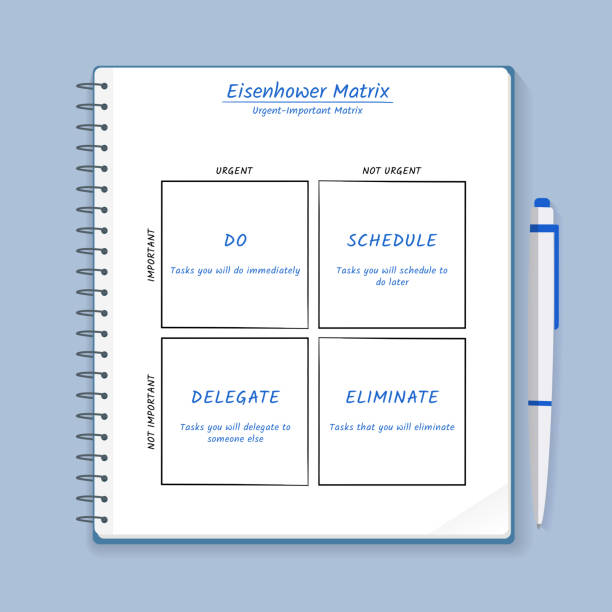Efficiency Redefined – Prioritize with Eisenhower Matrix for Task Excellence!
In the fast-paced world of today, where demands on our time seem ceaseless, mastering the art of prioritization is paramount for achieving task excellence. Enter the Eisenhower Matrix, a simple yet powerful tool that revolutionizes efficiency by categorizing tasks based on their urgency and importance. Coined after the 34th President of the United States, Dwight D. Eisenhower, who was known for his ability to make tough decisions with remarkable clarity, the matrix provides a structured approach to managing one’s to-do list. The matrix classifies tasks into four quadrants, each representing a different combination of urgency and importance. The first quadrant comprises tasks that are both urgent and important—these are the Do First tasks, requiring immediate attention. Whether it is a looming deadline or a critical project, addressing these tasks head-on ensures that crucial matters are handled promptly.
The second quadrant involves tasks that are important but not necessarily urgent—these are the Schedule tasks. These items require thoughtful planning and execution, as they contribute to long-term goals and success. This quadrant encourages strategic thinking and prevents the constant firefighting of urgent matters from overshadowing important, but less time-sensitive, ones. On the other side of the matrix, the third quadrant houses tasks that are urgent but not particularly important—these are the Delegate tasks. Here, the emphasis is on identifying responsibilities that can be assigned to others, freeing up valuable time for higher-priority activities. Effective delegation is a hallmark of leadership and allows individuals to focus on tasks that align with their expertise and contribute significantly to organizational goals. Finally, the fourth quadrant consists of tasks that are neither urgent nor important—these are the Eliminate tasks. In a world inundated with distractions, todoist eisenhower matrix recognizing and eliminating non-essential activities is crucial for maintaining focus and productivity.

What sets the Eisenhower Matrix apart is its ability to bring clarity to the chaos of a busy schedule. By systematically categorizing tasks, individuals gain a clear roadmap for their daily activities; ensuring that time and effort are allocated where they matter most. This approach transcends industries and professions, proving valuable for students managing coursework, professionals juggling deadlines and leaders steering their organizations toward success. In conclusion, the Eisenhower Matrix is a paradigm shift in time management, offering a systematic and intuitive approach to task prioritization. Embracing this tool empowers individuals to navigate the complexities of their daily lives with efficiency and purpose, ensuring that they not only complete tasks but also accomplish what truly matters in the grand scheme of their personal and professional journeys. As we redefine efficiency through the lens of the Eisenhower Matrix, we embark on a journey towards unparalleled task excellence and a more balanced, productive life.
